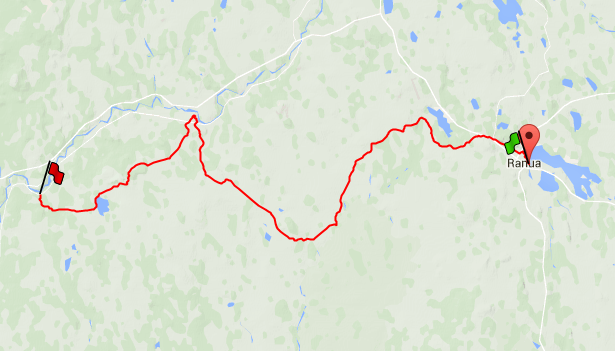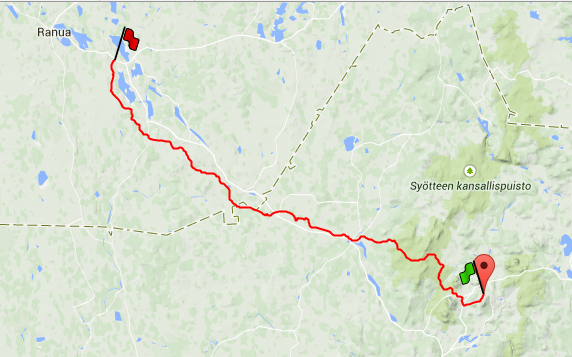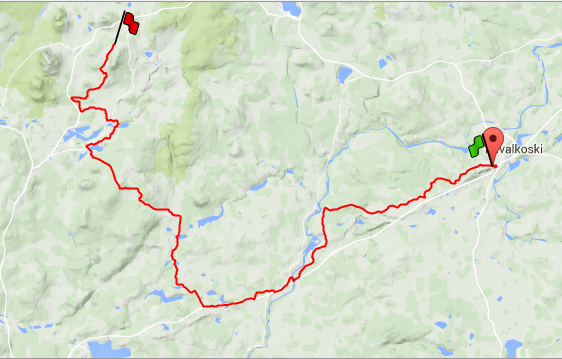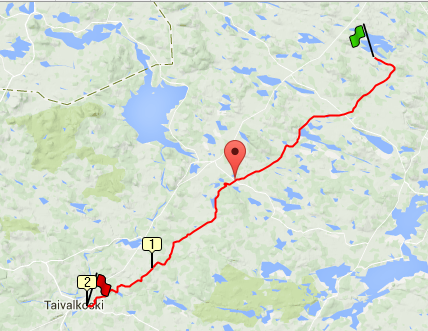- Not injuring myself, or making the minor ankle problem worse
- Finishing ahead of my daughter; if she keeps up her training, this will be the last time I manage to beat her
- Finishing in a reasonable time considering my fitness is only 90-95%
My first RR (2010) was hard - I wasn't quite sure what to expect. For some reasons, the falls I had hurt, one of my legs swelled significantly, probably through poor technique. But each year I find a few improvements I can make. I once looked up how much you deteriorate with age, and if you are not a serious athlete, then it is in the range of 03% to 0.7% - at least for running. Over the last two decades I have managed, on average, to keep my long weekly run to about the same sort of time - better when I am fitter, not so good when I take time off or are coming back from injury.
So looking at some of the areas I have improved over the years:
Muscles - I both run and ski now with compression socks - after suffering with shin splints, I find these have prevented a recurrence, and I now longer have problems skiing either. I also discovered that I am not the only one wearing them on the RR either. For more extreme conditions e.g. a competitive half marathon, I also may wear compression shorts to support across the front of the thighs. This is where I had a muscle problem last year, which was probably triggered by having to adapt my technique when my skis were icing up. This also shows the delicate interactions between you, technique, equipment and conditions.
Clothing - I more or less got this right from the outset - several layers, all breathable, seem to be the optimum. Northern Finland has an oddity - look at the top of tall chimneys e.g. the power stations and you will see the smoke is more or less horizontal from the chimney, indicating a strong wind. Normally, the wind at ground level would be 2/3 of that, but you are barely aware of wind at ground level most of the time. I suspect that the forest provides shelter, but even where it is more exposed, the wind is less than I would expect (but then I do live in one of the windier areas in England). I have some good layers that I would normally wear as an outer layer when not raining in the UK because they are wind proof, but have found that they trap the moisture too much when skiing.
Skis and equipment - on this I am definitely not an expert. In the hands of an expert, well waxed skis are the solution most of the time. On the RR, there is a waxing service available at most of the overnight stops, and I always make use of this. However, when the temperature creeps above 0C, it gets a little trickier - first the softer waxes, and then klijster. Last year, I tried the Atomic Skintec skis and found they worked fine. I had a few issues on a couple of days with them icing, but that was my fault; you live and learn, and I will make sure I have good anti-icing next time.
Nutrition - unlike a lot of people, I find it hard to eat much at the rest stops (and even eating a big breakfast and evening meal is hard - exercise tends to reduce my appetite instead of increasing it). After much experimentation, I have found gels that don't freeze easily, and nutrition bars that don't either freeze and break your teeth (yes, one year, someone broke a tooth on chocolate at -30C), or "suck" all the moisture out of your mouth. I also found a tube of wine gums good for a small amount of sugar, and sticks of liquorice (a Finnish favourite) good when you want a bigger sugar hit.
Which finally brings me to the hardest point - technique. I hope I have improved over the years. After the first year, I have somehow learned how to fall without hurting myself, a skill that has avoided broken bones on a couple of occasions in falls last year on the street. I have got better at pacing myself. Fitness and weight also have a bearing. I need more lateral strength in my ankles and better balance - I envy those who can effortlessly skate on skis - I am just too slow at transferring my weight from one ski to another in tricky situations. So this is the thing I need to work on this winter in preparation - technique, fitness, balance and losing a bit more weight would also help.
So with only 140 days to go to the start of the RR, I need to move my training up a gear. Losing 7kg is ideal, although even 2kg would make a significant difference. My sailing club is getting a gig - for rowing - which should help with upper body strength (for double poling), and I will have to look at ways of strengthening the ankles.















